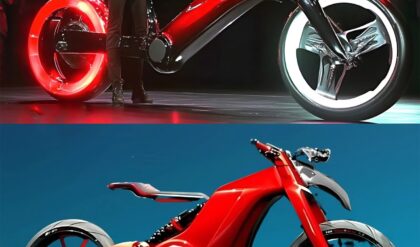Kayla Harrison will finally make her long-awaited UFC debut at UFC 300. A two-time Olympic gold medalist who spent the majority of her career with the luster of being unbeaten, Harrison—with her world-class judo and bulletproof confidence—drew immediate comparisons to MMA legend Ronda Rousey.
Rousey, like Harrison, was a woman of firsts. She was the first American woman to win an Olympic medal in judo, capturing bronze in 2008. Furthermore, she was also the UFC’s first-ever female champion. Harrison, by contrast, is the first American—male or female—to win Olympic gold in judo, and she did so twice.

Upon transitioning to MMA, Harrison enthroned herself as the PFL women’s lightweight champion. Now, she has signed with the UFC in pursuit of championship gold under the brightest of lights. However, those expecting her to replicate the magic of RouseyMania will likely be disappointed.
Kayla Harrison’s star potential vs. Ronda Rousey’s star power
The PFL has very few homegrown stars, but Kayla Harrison was one of them. While she is now octagon-bound, her MMA career began in the SmartCage, where all 17 of her bouts have taken place. Harrison first made her debut in 2018, with her transition to mixed martial arts drawing a measure of hype.As an Olympic medalist in judo, she evoked shades of Ronda Rousey, and even more so after submitting her opponent, Brittney Elkin, with a first-round armbar. However, the similarities between both judokas are superficial at best. Harrison is a slower, more methodical grappler more concerned with breaking her foes down.
Rousey, by contrast, was a buzzsaw. In Harrison’s first 8 fights, she had gone past round one four times and had two decisions under her belt. Meanwhile, Rousey’s first 8 fights were all first-round finishes by armbar. This drew a level of fan interest that Harrison never had.
First, Rousey tore through her opponents—within a round—with such quickness and ferocity that it was reminiscent of how Mike Tyson terrorized boxing’s heavyweight division at the height of his career. She was so quick, in fact, that several of her fights could be shown, from start to finish, in GIFs.
Furthermore, Rousey’s armbar became her signature move. Her supporters were adamant that no one could stop it, and her detractors described it as all she had. This caused people to flock to her UFC events in droves, eager to see if anyone could stop her fearsome armbar or what would happen if someone did.
It even led to the mistaken perception that judo was far more lethal on the mat than Brazilian jiu-jitsu. There isn’t, nor has there ever been, such interest in Harrison’s matchups. She does not fight like a force of nature whose victory is regarded not as a strong possibility but an inevitability.
Rousey was thought invincible, and it was due to more than her undefeated status. It was largely due to how she beat her opponents. Additionally, Rousey had the benefit of being a trendsetter. Before her, UFC CEO (then president) Dana White scoffed at the idea of women fighting in his promotion.
That was until Rousey’s star potential changed his mind. She was a torchbearer, a pioneer who broke down doors for women everywhere in the sport, inspiring many to take up MMA. Mothers had their young daughters watch her bouts as a testament to a woman finding success in a male-dominated industry.
She was inspirational, her fights were quick and lacked the gore that would have turned away most of her fanbase, who thought MMA too violent. There were no cuts, blood, or swollen eyes.
Harrison, while talented, will never be the crossover star Rousey was, and will never come close to Rousey’s career-best of 1.1 million pay-per-view buys.
Will Kayla Harrison even find championship success in the UFC?
The level of opposition Kayla Harrison faced during her PFL tenure is not up to par with the UFC. Besides Larissa Pacheco and Aspen Ladd, both of whom are ex-UFC fighters, most of her foes have relatively poor MMA records. In fact, Ladd is no better, having 11 wins and five losses.So, while matching Ronda Rousey’s commercial success as a star is impossible, can Harrison at least win a title in the UFC? First, there is the question of what Harrison will look like at 135 pounds, a weight she has never fought at, as her career has been spent entirely at lightweight and featherweight.
Whether she will be too drained to impose her physicality in the clinch has been a point of interest, prompting UFC CEO Dana White to disclose that the Olympic gold medalist has already conducted a successful test cut to bantamweight. It is her only path to UFC gold, as women’s featherweight no longer exists.
So, what does this mean for Harrison? From a skill-based standpoint, she has the tools to be competitive at 135 pounds if the weight cut doesn’t diminish her. She is one of the most varied takedown artists in WMMA, relying not only on classic judo trips and hip tosses, both powerful double-legs along the fence.
Her work at American Top Team has also taught her the importance of setting up her takedowns with her strikes. Due to having no fear of being taken down herself, Harrison throws low kicks and body kicks with impunity. But, she has never styled herself as a striker. Instead, she uses her strikes only to facilitate her takedowns.
Her southpaw stance makes her tricky to deal with for some, and her physicality in the clinch is second to none. Against the upper echelon of the UFC women’s bantamweight division, her skill set could prove dominant. The top five consist largely of limited fighters.
Some are strikers with underdeveloped defensive grappling. Others are generalists with no area of dominance. Some are grapplers with poor gas tanks and striking, and many of them are remarkably easy to trap in the clinch against the fence.
Holly Holm is the judoka’s scheduled opponent. ‘The Preacher’s Daughter’ has long aged past the mobile counterpuncher she once was. She is now a wall-and-stall clinch fighter who relies on her physical strength. If Harrison retains her own strength at 135 pounds, she could prey on Holm’s instinct for clinching.
Hip tosses, trips, and arm drags would be at her disposal. Others, like former champion Julianna Peña, flare out their elbows with every punch, telegraphing them as they storm forward with their eyes closed, chin exposed, and head static. This could present Harrison with an easy reactive double-leg.
And on the ground, Peña is no world-class Brazilian jiu-jitsu specialist. In fact, she was submitted by Germaine de Randamie, a kickboxer and Brazilian jiu-jitsu white belt. On the mat, she would be a sitting duck for Harrison, who is a far more competent grappler. Speaking of grapplers, there is also Mayra Bueno Silva.
Silva, who recently fought for the title, is an athletic finisher. However, she is impulsive, often rushing in search of a submission, which both exposes her to poor positions and depletes her cardio. Raquel Pennington, the reigning champion, is a durable generalist with an iron will.
However, she possesses no punching power and is unable to keep herself from clinching with her opponents, regardless of her corner’s instructions. The state of women’s bantamweight, it seems, is ripe for Harrison to take advantage of. But it all depends on how her weight cut will go.
Furthermore, becoming a champion is one thing. But to rack up six title defenses like Rousey is another, especially with her 34th birthday just a few months away. Harrison may be great, but the second coming of Rousey she is not.





